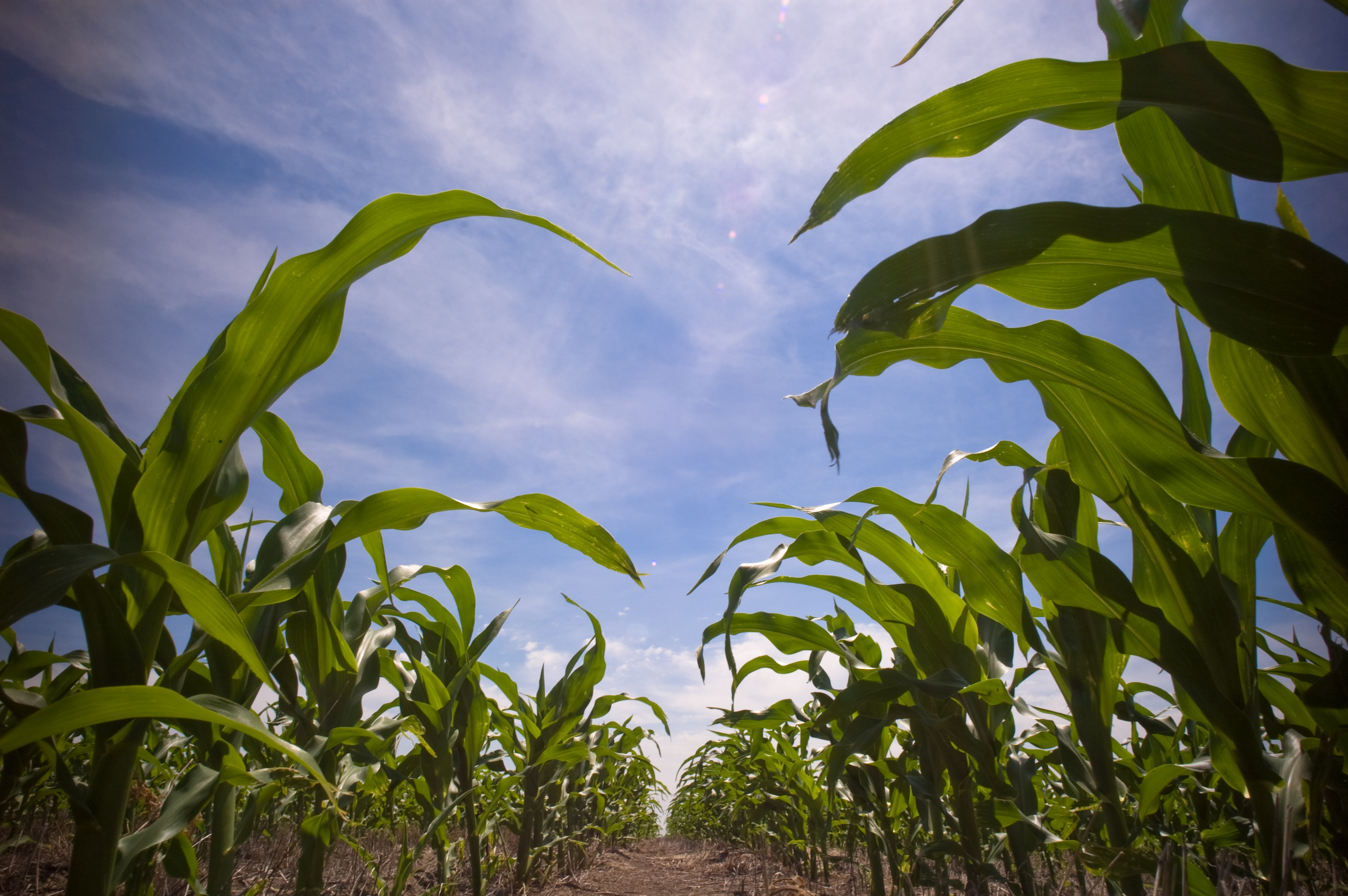April 2013
 |
| Maize/corn field in USA. Photo by Lars Plougmann (originally posted to Flickr as In the corn field) [CC-BY-SA-2.0 (http://creativecommons.org/licenses/by-sa/2.0)], via Wikimedia Commons |
Arpad Pusztai has suggested
we distinguish between 'science' (the search for truth through
like-for-like comparisons) and 'commercial research' (the search for
profit). A recent example in the published literature illustrated
this nicely (see TURNING A GM YIELD LOSS INTO A GAIN - April
2013).
Here's another one...
Here's another one...
Just published in the journal Crop Science, is a paper entitled “Transgenic Corn Rootworm Protection Increases Grain Yield and Nitrogen Use of Maize”.
COMMENT - This seems self-explanatory: it says quite clearly what was studied and what was found.
The
abstract indicates that:
- two transgenic triple-stacked hybrids were compared with their “near-isogenic non-Bt Roundup Ready corn 2 (RR2) counterparts” during two consecutive years of cropping
Note.
If you know your GM maizes, you'd realise that the test crop was
stacked with a Bt gene for Corn Rootworm (CRW), a Bt gene for
European Corn Borer (ECB) and a gene for Roundup herbicide tolerance.
- there was “minimal CRW feeding pressure on the roots“
- during one of the two years, the overall average grain yield and the ability to respond to nitrogen fertilizer increased due to the Bt trait for CRW resistance
- in conclusion, CRW protection “has supplemental agronomic benefits”
The
brief summary in the abstract raises questions about how 'scientific'
this study really was: when the information is expanded in the body
of the paper, the questions get bigger too.
For
example, only the CRW trait is mentioned as a variable which could
influence yield. The ECB trait is a second unmentioned variable in
the triple-stacked crop which could affect yield. The Roundup Ready
comparator crop was protected using soil-applied insecticide, which
introduces another variable into the study in regard to root function
and root-soil ecology which could affect yield. The Roundup Ready
plants not only had no Bt protein, but presumably also accumulated
Roundup; that's yet another uncontrolled variable which could affect
yield.
For
example, the CRW root damage was only measured during one out of the
two years of the study, and the yield increase seems obvious in only
one of the triple-stacked hybrids, also better nitrogen use was only
significant in one of the two years. Two readings giving divergent
results aren't very useful: are we seeing a 'chance' improvement or a
'chance' disimprovement in performance? Science
is based on at least three measurements to make trends clear and
avoid this type of doubt. In our previous illustration of commercial
research, similar triple-stacked GM maize observed 3,2015 times in
the University of Wisconsin trials gave a mean yield of 1.57 bushels
per acre less
than its conventional
counterparts. It seems that the smaller study may well be a case of
'chance' improvement because its findings aren't born out by the
bigger one.
For
example, the “near-isogenic counterpart” (i.e. the truest
scientific control crop) was, in reality an RR maize marketed by a
seed supplier as having the same genetic background and similar
characteristics and agricultural qualities. The “isogenic” part
was never confirmed.
COMMENT - After reading the examples above, does the title seem quite so self-explanatory? Did it really study the effect of CRW transgenic protection? Did it really identify an increase in yield? Or was there really really evidence of better nitrogen efficiency use?
The
conclusion of “supplemental” agronomic benefits attributed to
CRW-resistance genes in the abstract is expanded by the end of the
paper into agronomic benefits that extend beyond insect control, and
even go on to “support the role of biotechnology in promoting
sustainable and resource use efficient maize production to feed a
growing world population”.
OUR COMMENT
That's a
big conclusion to come from two readings of non-validated test
material in a study with four uncontrolled variables.
Was it
'science'? No
Was
it useful commercial research? Probably, because the nitrogen use
efficiency tests suggest that farmers may be applying more nitrogen
fertilizer than is necessary on some kinds of GM crop. It also
indicates that farmers and regulators should be demanding that the
biotech industry ascertain optimum fertilizers for each and every
novel crop on a case-by-case basis before
it comes to market.
Ominously,
the authors' comment that their results “suggest a role for plant
breeding in selectively improving genetic backgrounds for the desired
agronomic responses to a biotech insect protection trait.” Does
this mean that the plant breeders of the future will spend all their
resources trying to tailor the plants to fit their artificial genes?
To put
the research in another, possibly clearer, perspective, it was
“supported in part by a gift from Monsanto Company”.
SOURCES:
- Haegele and Below, Transgenic Corn Rootworm Protection Increases Grain Yield and Nitrogen Use of Maize, Crop Science 53, March-April 2013
- Benefits of Bt Corn Go Beyond Rootworm Resistance, Science Daily, 6.02.13
No comments:
Post a Comment
Thanks for your comment. All comments are moderated before they are published.